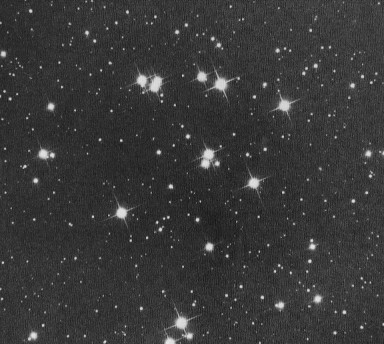When you look into the twilight sky, the brightest objects shine majestically against the bright blue background. That is the case for Venus this week, as it is for the young crescent Moon each month when it shines low in the West in the first few days after new Moon. However, in order to see the star clusters near Venus, you will need to use binoculars. The stars are there to see, but the bright twilight makes them all but invisible to the naked eye. It's worth the time to get out and see this spectacle. Sunset in San Francisco is just before 8:00 pm, and the sky will be dark enough about 45 minutes to an hour after that.
25 April 2010
A Beacon in the Twilight
As the days grow longer and the last vestiges of twilight linger later in the evening, look to the West this week for some very beautiful planetary/celestial lineups. The week features fast-moving Venus passing very near to some of the most spectacular star clusters in the night sky, the Pleiades and the Hyades.
14 April 2010
09 April 2010
Mars and the Beehive
Over the past few weeks I have been watching the gradual change in position of Mars as it moves from retrograde to prograde motion across the sky, now moving steadily eastward across the constellation Cancer and next to a beautiful cluster of stars knows as the Beehive Cluster, or M44.

Mars, like all other planets, moves eastward from our point of view most of the time but when Earth have just the right alignment (as we did with Mars over the last few months) a planet may appear to travel westward, and we call this motion "retrograde." Click on the image to see how Mars was in retrograde from December through March.
Now that Mars is moving eastward again, it is traversing a part of the constellation Cancer where you can find the Beehive Cluster, an open cluster of stars (like the nearby Hyades cluster in Taurus). It is relatively close to the Solar System compared to most clusters, and it is a gem in binoculars. With Mars as your guide "star" you can easily navigate to the Beehive Cluster high overhead this time of year. It's worth a few minutes to see if you can spot it.
constellation Cancer where you can find the Beehive Cluster, an open cluster of stars (like the nearby Hyades cluster in Taurus). It is relatively close to the Solar System compared to most clusters, and it is a gem in binoculars. With Mars as your guide "star" you can easily navigate to the Beehive Cluster high overhead this time of year. It's worth a few minutes to see if you can spot it.

Mars, like all other planets, moves eastward from our point of view most of the time but when Earth have just the right alignment (as we did with Mars over the last few months) a planet may appear to travel westward, and we call this motion "retrograde." Click on the image to see how Mars was in retrograde from December through March.
Now that Mars is moving eastward again, it is traversing a part of the
 constellation Cancer where you can find the Beehive Cluster, an open cluster of stars (like the nearby Hyades cluster in Taurus). It is relatively close to the Solar System compared to most clusters, and it is a gem in binoculars. With Mars as your guide "star" you can easily navigate to the Beehive Cluster high overhead this time of year. It's worth a few minutes to see if you can spot it.
constellation Cancer where you can find the Beehive Cluster, an open cluster of stars (like the nearby Hyades cluster in Taurus). It is relatively close to the Solar System compared to most clusters, and it is a gem in binoculars. With Mars as your guide "star" you can easily navigate to the Beehive Cluster high overhead this time of year. It's worth a few minutes to see if you can spot it.
Subscribe to:
Posts (Atom)




